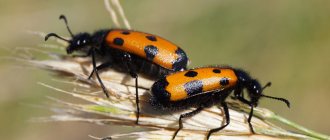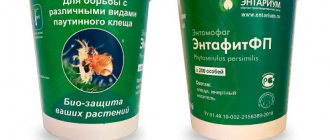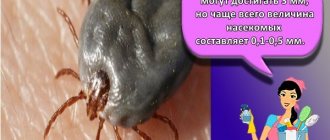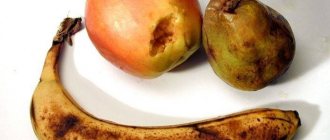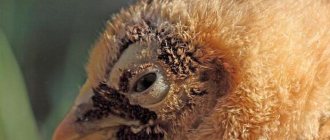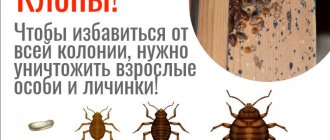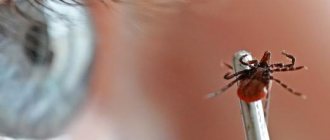Brief description: Types of insects similar to mites. Why are some types of insects confused with dangerous parasites? Bedbug, bloodsucker, spider, false scorpion, which makes these species look like ticks. The main differences by which you can recognize a tick dangerous to humans.
There are a huge number of insect species that are known to science, and the average person does not even know about the existence of most of them. There are species of insects that have some similarities with the well-known ticks, from which we try in every possible way to protect ourselves.
Such external similarities often lead to the fact that we mistake completely harmless insects that are unable to harm humans for dangerous parasites. In addition, when it is necessary to use specialized drugs against parasites, they choose the wrong drugs that do not bring any effect. Next, we will find out what bugs, beetles, and insects are similar to ticks and what are their differences.
What is dust and why do dust mites live in it?
This will come as a shock to many, but more than 20% of room dust consists of particles of the dead upper layer of skin, called the epidermis, flying off us. Moreover, the more people live in an apartment, the richer the content of skin flakes in the overall mixture will be. In addition to them, the household dust suspension contains:
- smoke particles (soot) 3%;
- fibers of various fabrics and paper – 12%;
- various types of mineral particles – 34%;
- flower pollen – 6%;
- other pollutants (fragments, flakes of animal hair, fluff, etc.) – 25%.
In winter, accordingly, there is less flower pollen, but there is more clothing, and therefore this 6% migrates to what falls off from winter outerwear. This is what dust looks like under a microscope.
Beetles that look like ticks
In nature, there are many insects that resemble ticks in appearance or in their vital functions.
Deer bloodsucker
Deer bloodsucker
An amazing creature that looks like a tick, flea, or fly. It has a relatively powerful body, tenacious legs with claws. A distinctive feature is the presence of transparent wings and three pairs of limbs. The insect prefers sunny areas with deciduous trees, bushes, thickets, and tall grass.
They attack wild animals, deer, elk, and cattle. They feed on blood and are carriers of dangerous diseases - fever, Lyme disease.
Bed bug
Bed bug
Detecting this insect is problematic, since it leads a hidden lifestyle and activates its parasitic activity at night. The bedbug feeds exclusively on human blood. Builds nests in the room where a person sleeps. Favorite places are under the mattress, carpets, in the sofa, interior items, books, at the joints of furniture.
You can distinguish a bedbug from a tick by appearance and lifestyle.
- The body of a bed bug is flattened when hungry, but after a hearty meal it takes on a convex shape.
- 6 pairs of limbs in larvae of any age, imago.
- Bed bugs and ticks feed on blood, but the former prefer humans, the latter prefer animals.
- Bedbugs are present on the body while feeding and spend most of their lives in nests, actively reproducing. The time for meals is from 3 a.m. to 8 a.m.
- Noticing the presence of a live parasite in bed is problematic, while a dead body is easily discovered after a night meal. A well-fed bug is a vulnerable creature that dies at the slightest pressure on the body.
Spider
Spider
Spider mites have a lot in common with spiders, as they belong to the same class. However, when it comes to representatives of our area, distinguishing one creature from another is very simple.
Spiders have a convex body shape, four pairs of limbs, and a hard ecoskeleton that practically does not stretch. They feed on insects and small animals. Hiding from the sunlight. They are not interested in a person at all; they appear on the body “by mistake.”
You can distinguish a tick from a spider by its characteristic web. Arthropods form their networks for prey. Butterflies, flies, larvae, mosquitoes, and other small insects easily get caught in the web. Less often, spiders attack themselves.
You can distinguish a tick from other insects by its external characteristics, vital functions, and nutrition. The parasite is active in the warm season and is found in the wild, forest belts, city parks, and in green vegetation in the yard. It is not always possible to immediately determine the presence of a pest on the body. The main symptoms are itching, swelling, redness, and sometimes an attached parasite.
Description of the tick
When carefully examined with a magnifying glass or microscope, the mite resembles a crustacean. If you carefully examine the limbs, there is a clear resemblance to spiders. Ticks are usually classified as arthropods, arachnids.
Ixodid tick
Interesting fact!
In everyday life, people call parasites insects, but it is worth noting that this belief is incorrect. With full confidence, many attribute ticks to a type of spider. The number of arachnids is approximately 54,000. But what is remarkable is that the tick is an animal. The length of the tick's body ranges from 0.2 mm to 5 mm. The body is divided into two parts or has a solid appearance; the tick moves with the help of 4 pairs of paws. This is a parasite with a convex body and a variety of colors. Ticks come in gray, brown, brown and red shades.
Habitat: wild nature. To maintain its life, the tick feeds on the leaves of trees and shrubs and eats grass. It most often attacks animals, but, worst of all, it can lurk on the human body. The tick spreads its bites on any part of the body.
There are a great variety of insects that are similar in appearance to mites. Let's look at the main insects that look like mites.
Deer bloodsucker
This insect is most often confused with ticks, for which there are reasons. The insects belong to the family of bloodsuckers and are also called moose ticks. The difference is that they have wings and they have the ability to fly. They feed on the blood of animals and also attack people. Therefore, you can often hear the statement that ticks can fly.
The size of an adult individual reaches 3.5 mm. The body is oval-shaped, flattened, and brown in color. The piercing-sucking mouthparts are quite well developed; they attack large animals such as cattle. There are fairly large eyes on the head, and there are also antennae, but they are not clearly visible, since they are hidden under the outer cover. They have only 6 legs, on which there are claws. When they are saturated with blood, the flat tummy increases significantly in size. There are transparent wings on the back.
Most common in the European part of the country, Siberia, and Primorsky Krai. Most often, their victims are moose, deer and roe deer. But they are not at all picky about food, so they can attack foxes, wild boars, badgers, goats, and sheep. If their numbers are large enough, they attack domestic animals and even people in search of food.
When they find their prey, they attach themselves to the body and shed their wings. This becomes another reason for confusion between insects and mites. Having attached themselves to the body, they have no pronounced differences for those who see the bloodsucker for the first time. You can study their appearance from the photo and then obvious differences will be noticeable.
Appearance of a tick
First of all, you need to know that ticks are arachnids and are not insects. You should also understand that there are a huge number of types of ticks and it is simply impossible to know about the external features of each of them. There are parasites that attack people and animals; they pose the greatest danger because they are carriers of serious diseases.
There are also pests that parasitize plants. In addition, there are species that are inhabitants of the aquatic environment. There are also beneficial species that destroy pests.
Let's look at the appearance of parasites that are dangerous to people and animals. These individuals have an oval-shaped body. In some it is wide along the entire length, and in others it narrows towards one edge, reminiscent of an ovoid. All of them have 8 legs; if an individual is at the larval stage of development, then it has only 6 legs.
Regarding the size of the body, it certainly depends on the species; there are individuals from 0.5 mm to 5 mm. They do not have wings, and there are no antennae on the head of the parasite, like most insects. Ticks navigate in space and find their victims using a special sensitive apparatus, since they do not have vision organs.
Also, depending on the specific species, parasites have different body colors. Blood-sucking parasites do not have bright colors; they can be gray, brown, brownish-red. But plant pests, on the contrary, have quite bright body colors, yellow, green, blue.
Appearance and classification
Ticks are the oldest invertebrates with a primitive structure. Their miniature body size helps them spread and survive everywhere. Their body is divided into two parts, the border is located closer to the front. Four pairs of legs consist of several segments, the final one is a tarsus, armed with claws and suckers.
The first pair of appendages, chelicerae or jaws, are characteristic of all arachnids. They look like pincers and are used for piercing and cutting. The oral apparatus also includes pedipalps, limbs located on the side of the chelicerae. These processes grow together at the base and, together with other parts, form a movable head. There are some differences in the structure of the oral organ, depending on the type of nutrition. In saprophages that eat dead remains, it is gnawing, while in predators and parasites it is piercing-sucking.
In representatives of different species, the number of eyes varies from 0 to 5. The body of arthropods can be soft, leathery or covered with a hard shell.
Classification
Most species of mites are predators and saprophages. They live independently and do not need to parasitize other individuals to develop. Scientists divide the Acari subclass into three superorders:
- Harvester ticks (Opilioacaridae) are large terrestrial individuals measuring 1-3 mm in size. There are 25 known species inhabiting the tropics and subtropics. Their head and thoracic region merge into the cephalothorax, delimited from the abdomen. The oral apparatus consists of chelicerae, pedipalps and upper lip. On the back there are three pairs of eyes. Their long legs make them look like harvestmen. Representatives of the family live in the forest, under stones, and in the soil. They feed on solid food, including small arthropods, plant pollen and fungal spores.
- Parasitiformes are a superorder with 12.5 species. This group includes parasites of vertebrates, as well as predators and saprotrophs (individuals that destroy the remains of living beings). Among the most dangerous representatives of the superorder are ixodid and argasid ticks.
- Acarimorphic mites (Acariformes) are the largest group, which includes more than 30 thousand species. Individuals of the family are characterized by the addition of segments throughout life. About half of the group consists of sarcoptiform mites, which parasitize vertebrate animals. They feed on feathers, skin, and hair. Thrombidyphoid mites (almost 22 thousand species) include plant pests and carriers of infectious diseases.
Variety of tick species
What structural features of ticks and spiders indicate their similarity?
Although ticks and spiders have some similarities, it is quite easy to distinguish them from each other.
For example, they have similar characteristics, belong to the same class - arachnids, and arachnology studies them in detail. This pair of close “relatives” has many similarities. Reference. The main distinguishing feature of ticks and spiders is their body structure.
It consists of a pair of sections: the abdomen and the cephalothorax. The main similarities between ticks and spiders are four pairs of legs and simple eyes.
Chemicals
Getting rid of linen lice is not difficult. However, this requires certain knowledge and compliance with certain requirements. To get rid of parasites, it is best to adhere to comprehensive measures. You should start with hygiene procedures. At the pharmacy you can purchase many effective drugs in the form of shampoo, spray or emulsion. Antiparasitic agents include permethrin, dimethicone, benzyl benzoate or butadione.
After applying the treatment, the lice lose mobility and die. However, the procedure for treating the surface of the body should be repeated several more times: nits often easily tolerate chemical exposure. Among the most effective drugs for linen lice are NOC, Pedilin, Permethrin, Mediforks, Nix. Before using the drugs, you must carefully read the instructions. After all, many of them have serious contraindications. Allergy sufferers, pregnant and lactating women, and when applying the product to small children should be especially careful.
After treatment with medications, a burning sensation may occur. Ointments “Zvezdochka”, “Rescuer” or other antibacterial agents will help get rid of it and speed up the healing of wounds. If allergic reactions to lice bites occur, you should start taking antihistamines.
In parallel with procedures related to disinfection of the body, clothing should be treated. To do this, use a washing machine. Set the wash cycle to the highest temperature. Before putting things into the drum, soap them with tar soap. Add 2-3 tbsp to the powder compartment. l. acetic acid. This way you will get rid of not only adults, but also nits (acid corrodes the chitinous shell on insect eggs).
What does it look like
Not everyone knows what a tick looks like, especially those who have never encountered one. Despite the fact that these parasites belong to the arachnid family, visually they are not similar.
They are small in size, so they are difficult to notice immediately. They prefer to feed on the blood of animals and people.
The main external features of insects include:
- The body of hungry individuals is small, its dimensions rarely exceed 4 mm, but when saturated it increases to 1 cm;
- Insects dig into the skin with the help of a special proboscis, and the lateral jaws help them firmly attach to the surface of the victim’s body;
- On the surface of the head and cephalothorax there is a chitinous shell with a durable structure; it is dark brown in color;
- A hungry parasite has a brown body with a protruding rim along its edges;
- Ticks have 4 pairs of legs with claws, with the help of which they climb clothes and skin.
You need to know what a tick larva looks like. She emerges from the egg after 2-4 weeks. In appearance it is no different from adult individuals, but it is much smaller in size. The size is no more than 0.5 mm.
Do dust mites bite?
We have already seen what dust mites look like. From the photos provided, it becomes clear that they do not have “biting” organs as such. In everyday life, we are used to calling a bite - pricks with a sting (for example, a mosquito), pinching the skin with the front claws on the snout (some spiders, forest mites, meadow mites, beetles), etc. But this does not apply to dust mites. Even if they have a hole with some kind of mandibles, with which insects absorb all the same scales of the upper layer of the epidermis that once fell off a person, then they are simply not able to bite the skin tissue with them.
They will not be able to pinch her in any noticeable way. These creatures are so tiny that any of their mechanical effects on the epidermis will be unnoticeable from an anatomical point of view. By their effects on skin tissue, they will not be able to excite more than a single nerve receptor in the human body, regardless of its location.
Plus, dust mites can only digest particles of dead epidermis. Living skin is not food for them. In scale and biological proportions, a tick bite can be compared to what it would be like for a person to want to bite the thigh of a boar that is 100 times larger in size. Firstly, the material is too rough - not suitable for human teeth, and secondly, the surface tissue of a boar's thigh will not be suitable for food.
But some may protest, they say, we’ve all seen what dust mite bites look like, so where do they come from if mites don’t bite?
How to distinguish a tick from a spider
The main distinctive features are:
- The tick has no pronounced body segmentation; the cephalothorax and abdomen are fused.
- The parasite's mouthparts are located separately from the body, which forms a false head.
- Ticks have mouthparts that can penetrate the skin to drink blood.
- Arthropods differ in size; mites rarely grow up to 3 millimeters, mostly their height is 0.2-0.4 mm. Spiders are much larger in size, some of them are poisonous.
Reference. The main food of ticks is decaying organic matter and blood. Spiders are mostly predators that feed on other insects and spin webs to catch them.
Ticks have eight legs; they have peculiar devices with which they are attached to the surface:
- skin;
- wool;
- feathers
Small parasites breathe with their whole body, while large ones do the same with their tracheas. By their nature, ticks are dioecious, with females having a significantly larger body size. Unlike spiders, they have an indirect type of development.
Important! It is impossible to independently determine whether an infectious tick has embedded itself or not. Their appearance and color do not depend on whether they are infected or not. Therefore, you should definitely take the parasite to the laboratory for analysis.
Despite the external similarity of ticks and spiders, they are different in nature. An encounter with these parasites can significantly change a person’s life, and, unfortunately, not for the better. A tick can infect encephalitis, and the bite of a spider, for example a Black Widow, can even kill a person. Therefore, you should be prepared for such a meeting and be able to distinguish a tick from a spider.
Gadfly
This large, loudly buzzing fly is often confused with a horsefly, and it really does look like one. But if a horsefly only bites painfully, drinks blood, and in the future this wound can fester or cause a high body temperature, then the appearance of a gadfly nearby can become the cause of human death in the future.
Gadflies live in various regions of our country, including often found in the Moscow region. Depending on their type, they - subcutaneous or cavitary - lay their larvae in this way. Gadflies always circle in those places where cattle are grazing, so when you are in the country or in the village, you need to be very careful. Botflies of the subcutaneous species tend to attach their larvae to human hair or animal fur. Over time, these parasites penetrate the skin, penetrate the body and move through the tissues.
Doctors from the Center for Hygienic Education of the Population in the Moscow Region say that a person affected by a gadfly can be saved surgically only at the initial stage, after which it will no longer be possible to do so. Nature has destined the gadfly larvae to parasitize horses and cows, therefore, making their way through the internal tissues, they tend to crawl upward and, as a result, gnaw their way out on the back of the affected animal. When a person becomes the host of such parasites, the larvae also rush upward, but into his head, but before they make their way to freedom, the person’s death occurs.
Bed bug
A red insect that is often confused with a tick is a bed bug. A domestic or bed bug often goes unrecognized because... at different periods of its life cycle it may resemble different types of insects or a tick.
The hungry bug has a flat, round shape and a reddish tint, its size is about 5 mm. It differs from a tick in the number of limbs; a bug is an insect, so it has three pairs of limbs. The bug feeds on blood, and when saturated with it, it enlarges and darkens until it becomes black. By the way, a well-fed bug is more vulnerable - because... a flat specimen is especially difficult to crush.
The photo shows a hungry and blood-fed bug:
The bedbug larva may also appear similar to a tick - it is translucent and yellowish, but can be identified by a black dot on the abdomen.
These bugs live in colonies and attack their prey at night, leaving a huge number of bites at once - small red dots, most often located in “paths”, several at a time. Bedbug bites are not associated with the same risks as tick bites, but they do cause a lot of unpleasant sensations - pain, severe itching, and possible allergic reactions. In addition, bite marks take a very long time to disappear.
Signs of infection
Clothes lice infestation can be recognized by the following signs:
- red itchy rash under clothes;
- pain when trying to scratch;
- scars remaining after scratching;
- cyanosis of the affected areas.
Body lice bites can be distinguished from bedbugs by their characteristic features. Bedbugs always leave a trail, and lice bite randomly. Bites are most often located in the buttocks, abdomen, neck, lower back and sides. These are the places that come into contact with underwear.
Lice bites are accompanied not only by redness and itching, but also by swelling. At the moment of a bite, insects inject a special enzyme into the human blood that prevents blood clotting. The entry of a foreign protein into the blood is accompanied by pronounced allergic manifestations.
What happens if a tick does bite?
Doctors identify four scenarios:
- Nothing bad will happen: the bite site will hurt a little, just like after any other insect bite.
- Infection with the tick-borne encephalitis virus will occur (this happens at the time of the bite).
- Borreliosis (Lyme disease) infection will occur. It is believed that the tick must be on the skin for at least 36 hours for a person to become infected, but this opinion is erroneous.
- Infection with babesiosis, ehrlichiosis or other diseases that are much less common than those mentioned above will occur.
There is no prevention of diseases caused by ticks, except for a vaccine against tick-borne encephalitis. In order for immunity to appear, two doses of the vaccine are enough at an interval of one month. A person will receive protection from a terrible disease two weeks after the second vaccination. The third vaccination must be done after a year, then the immunity will be long-lasting.
At the end of May, you can also be vaccinated according to an emergency scheme (the interval between two injections is reduced), immunity against tick-borne encephalitis will be formed in the same two weeks. One vaccine will not protect against the disease.
The vaccine does not protect against other diseases.
What do they eat
Clover mites are polyphagous. They feed on a wide range of plants:
- lawn grasses;
- decorative flowers;
- clover;
- dandelion;
- shepherd's purse;
- strawberry;
- daffodils;
- sage;
- alyssum;
- primrose.
They are especially numerous on lawns with strong growth of lush, well-fertilized grass. They do not cause visible harm to the lawn, but their feeding activity gives the grass a silvery color. They cause damage to plants when there is a large population.
They reproduce parthenogenetically. The eggs do not need to be fertilized and they are all female. About 70 eggs are laid.
They enter apartments in very large numbers through cracks and small holes around windows and doors. They are found more often in sunny areas than dark ones. If crushed, they leave a characteristic red mark caused by their pigmentation.
Clover mites are not harmful to people, pets or furniture.
Why do lice appear?
The source of infection is usually people who are already sick. The situation is aggravated by unfavorable social factors - in the event of war, a long stay near people without a permanent place of residence, who do not maintain cleanliness and do not care about their health.
But you can bring a louse of this species from a completely safe place! This is where the cunning of lice manifests itself - they do not care whether a person takes care of himself. But linen lice still comes to visit untidy people more often.
Infection is quite possible through contact with someone else's bed, hygiene items such as a towel or any clothing.
You can get parasites:
- at the hotel;
- on trains (including electric trains);
- in a taxi;
- when visiting a hairdresser;
- while trying on clothes in a store or market;
- in a tourist or children's camp;
- and even visiting.
In fact, not a single person leading a social lifestyle is safe from uninvited guests. Mass gatherings of people and places of temporary residence pose a certain risk. This is where insects most easily and quickly get on clothes.
Favorite places to live
The more carpets, upholstered furniture and other textile decorations and interior items there are in the house, the more and faster dust will form in it. For example, carpets are a favorite habitat for dust mites. A huge amount of “provisions” always settles on them. The next photo shows dust mites that feel great among carpet textile fibers.
Separately, it is worth mentioning feather and down pillows, as well as mattresses. Scientists managed to have a hand here too, calculating that up to two million dust mites constantly live in an ordinary average double bed. And feather and down fillings, if there is a lack of food, can themselves become food for these microscopic creatures.
Household and other appliances deserve a special mention. Old monitors, stereos and DVD players are potential cities and breeding grounds for dust mites. There is always a lot of dust among the microcircuits, capacitors, resistors and other radio equipment, but if there is a lot of dust, and no one cleans it out for a long time, mites live in it especially freely.
Karakurt
If a tick can turn out to be both a carrier of a dangerous disease and a partly harmless blood-sucking insect, then the karakurt, or rather the female of this spider, has one of the most powerful poisons known to mankind. She weaves her web in the arid forests and meadows of Crimea, Voronezh, Rostov, Saratov, Volgograd regions and even in the southern regions of the Moscow region. The insect has a small black head and a large, round body with bright red spots, as well as long thin legs and reaches sizes of 1-2.5 cm. The female karakurt spider can attack an animal or person if it feels a threat to its life. For example, they try to brush it off the clothes where it got caught because they tore its web, or they intend to crush it. Then she bites through the skin of the offender with her chelicerae, and injects the existing poison to a depth of 0.5 mm. After 10-15 minutes, the person affected by karakurt experiences muscle breakdown, chills, as if a virus infection has begun, the heart rate increases, shortness of breath, dizziness, and numbness of the limbs appear. Then the person experiences incredible weakness, his arms and legs stop working, and he starts vomiting. At the last stage, which can develop within a few hours, clouding of consciousness occurs, loss of the ability to perceive reality and recognize loved ones.
What is the danger to humans?
As already mentioned, the vision of an elk tick allows them to distinguish only large objects, so a person, especially a small child, does not attract their attention.
But there are times when these insects attack a person, despite the fact that human blood does not provide them with the necessary nutrients needed to reproduce. This usually happens at the end of summer and beginning of autumn, at the peak of their activity, during the day in calm weather. Many cases of mass attacks by bloodsuckers have been recorded. Foresters, hunters, and shepherds most often become victims of elk ticks.
Bloodsuckers do not carry any infectious diseases. Therefore, their bites cannot cause serious harm to health.
The body's reaction can be varied. Typically, redness, itching, swelling, and a burning sensation appear in the area of the bite. The discomfort goes away within 1–2 weeks.
The main danger of the insect is that bites can cause complications in the form of allergies and dermatitis:
- macular rash is the appearance of voluminous red papules with a crust. Papules quickly spread throughout the body. such rashes are not accompanied by inflammatory processes or itching, and after them there are no marks or scars left on the skin;
- papular rash - rashes accompanied by peeling and inflammation. Treatment and observation by a dermatologist is necessary;
- red and swollen dermographism - persistent skin irritation, the appearance of a tumor at the site of the bite, occurs in people prone to hives;
- the appearance of inflammatory nodes, erythema. Long-term treatment of up to six months is required.
People are occasional victims of deer bloodsuckers. A person perceives these insects as ordinary flies. Moose lice bite people very painfully. Their bites mainly occur on exposed areas such as the neck and lower part of the head.
If people are repeatedly attacked by these insects, the pain becomes more severe.
- When there is a huge population of deer lice, they can attack up to 200 individuals per person.
- When they land on a victim, they climb onto an exposed body or hair and live there until you find them.
- At first, a person bitten may not notice signs of a lice attack. After 3 days they will show themselves fully.
In addition to animals, deer flies also attack people. You can encounter this during the daytime in the forest, when there is no wind. Cases of mass attacks (more than 100 pieces/min.) of insects per person have also been recorded.
Since a tick with wings is based on size, it attacks adults more often than seven-year-old children. The most attractive targets for bloodsucker are moving targets.
After a deer lice lands on a person, it does not move for a couple of seconds, and then quickly begins to look for a place through which it can get onto the body or hair. It is almost impossible to dislodge the insect; it holds on well with its tenacious nails. As soon as the moose fly gets under the clothes, it begins to drink blood. In rare cases, this process begins after half an hour or an hour. The bloodsucker will remain on the body until it is removed.
For humans, the moose fly is dangerous because of its painful bites, which swell and turn red. For allergy sufferers, they can cause irritation throughout the body. In this case, you may need to take antihistamines.
According to observations, the skin reaction of a person who is bitten by bloodsuckers every year is much stronger.
Lice cannot live on a person for a long time; they stay on his body only for 2 days, since human blood is not suitable for them to give birth to offspring. There is no evidence that deer ticks transmit infectious diseases. However, the deer bloodsucker is dangerous to humans because it can cause many skin diseases.
What is the danger?
This little bug is capable of causing enormous harm. It is very dangerous for grain crops, as it can reduce yields several times. In addition, it is dangerous because its waste products contain pathogenic microorganisms, including E. coli. It eats grains, cereals, flour, a variety of dried fruits and will not pass by meat waste.
Where the flour mite has visited, food becomes unfit for consumption, since there is a high risk of infection. The mildest consequences include poisoning and allergic reactions. But unfortunately, there is a possibility of infection with scabies, Lyme disease, and urticaria. In addition, diseases of the respiratory tract and genitourinary system may occur. It is also dangerous for animals; if they taste contaminated food, they will experience severe diarrhea, weakening of the body, decreased appetite, or a complete refusal to eat it.
Reproduction of false scorpions
A black beetle with claws in front is building itself a shelter from scrap material, in the apartment it is leftover paper. They are glued together with cobwebs. Molting and egg laying take place there. In the wild, the building material is dry vegetation, moss, and leaves. The beetle overwinters in a cocoon.
False scorpion
Pseudoscorpions become sexually mature at the age of 1 year, and the imago lives for another 2 years. After fertilization, the eggs inside the female take a month to develop. Then she pushes them into a special chamber connected to the ovary and continues to drag them along with her.
The number of eggs in different types of false scorpions differs - from 3 to 50 pieces. The first generation larvae feed on the yolk secreted by the ovaries, grow, increase in size, break through the sac, and crawl out.
Externally, the larva is similar to the imago, but the chitinous cover is white, soft, and the pedipalps are short. Until the first moult, the nymphs continue to live on the female’s body and feed on egg yolk. Then they crawl to the side, form a cocoon, and change the chitinous cover to a darker, harder one. During the entire period of maturation, the nymph molts 6 times; at the last stage, the genitals appear.
What are the symptoms and signs of a tick bite in a person?
Tick larva
The body shell of the tick larva is not yet fully formed - bristles may be absent, and in armored species the body shell is translucent and thin. The larvae are especially active in the warm season; they choose small terrestrial animals as hosts - mice, hedgehogs, lizards, since it is difficult for these little parasites to rise to a significant height.
According to American sources, the question of whether a tick larva is dangerous for humans can be answered positively: the bite of a tick larva is dangerous if we are talking about the larva of an encephalitis tick. Thus, the tick larva is a carrier of diseases and is dangerous to humans!
According to the US Department of Health and Human Services, 20% of nymphs carry diseases such as Lyme disease, so even though they are not yet fully formed, they are already dangerous. Thus, the tick nymph is dangerous to humans, and the nymph’s bite can transmit various diseases (encephalitis, Lyme disease and others).
Tick nymph on the right, black-legged tick on the left
- increase in temperature to 37-38 degrees, redness of the bite site, drowsiness and weakness, itching, chills, aching joints, photophobia, Quincke's edema (swelling of the eyelids, lips and other parts of the body), enlarged lymph nodes.
- headache, nausea and vomiting, difficulty breathing, and hallucinations may also be present.
What are the differences between ticks and spiders?
A person simply needs to learn to distinguish a tick from a spider, since the former are parasites, they can cause harm to human health, and sometimes even life, as they can provoke:
- Encephalitis (inflammation of the brain);
- Lyme disease. As a result, internal organs suffer;
- Allergies . In the worst case, the consequences can be fatal, as anaphylactic shock occurs.
Not all parasites are harmful and dangerous. But it’s better to learn to distinguish a spider from a bloodsucker; sometimes this is quite difficult to do.
First of all, when a person finds a tick on his body, the safest option is to take it to the laboratory and have all the tests done. This method will help avoid the development of all possible diseases. You can also consult a specialist.
Despite the fact that both relatives have eight legs, the tick has its own peculiarity - one continuous large peritoneum. In addition, the spider’s body is more convex in appearance than that of the parasite. The second representative has a flat body, but this happens when the parasite has not had time to eat.
Important! The distinctive features are quite expressive, but despite this, there is one caveat: when there is a small spider in front of a person, it is difficult to discern a couple of segments in the body. At first glance, you can only see one solid one, so this fact is worth taking into account.
There are also differences in the lifestyle of arthropods. Ticks, unlike spiders, feed on human blood; they do not make webs and lead a different way of life.
It is also useful to read: Where do ticks come from and where do they live?
How to identify a deer tick bite on the body?
Consequences of a fly bite stuck to a person:
- the formation of a papule at the site of the bite - a dense tubercle protruding above the surface of the skin;
- the appearance of severe itching;
- redness of the tissues adjacent to the wound;
- the appearance of a macular rash often with a crust;
- the formation of a papular rash and severe itching without fever;
- blistering;
- the appearance of persistent dermographism.
While clarifying the question of whether an elk flea is dangerous for humans, scientists came to the conclusion that an insect bite is dangerous due to the body’s unpredictable reaction to it. In some people who were bitten, the first manifestations in the form of exudative nodes of an acute inflammatory nature were observed after 4-7 years (entomosis, erythema, etc.
Interestingly, an elk flea bite is also dangerous for humans due to associated problems. An itchy place is the reason for infection to enter the body. A deer fly that bit a man left an open wound on his body. Combing it with dirty hands in 82.6% of cases leads to pathogenic microflora entering the body. Therefore, having discovered a papule on the body, you need to:
- disinfect the bite site and adjacent tissues - hydrogen peroxide, alcohol, etc.;
- take an antihistamine - especially if a fly similar to a tick has bitten a person prone to allergies;
- cover the wound with a band-aid and lubricate it with a local antipruritic drug;
- See a doctor immediately.
Knowing the results of an elk louse bite, the treatment of complications should be entrusted to a specialist. An allergic reaction can be very strong, because during feeding the insect does not stop its vital activity. The wound may be contaminated with moose tick feces, which is dangerous for a person with increased sensitization of the body to irritants.
Now you know that moose fleas are dangerous to humans, so a trip to the forest should be carefully considered. Experts recommend:
- wear clothing that covers the entire body;
- the trouser legs, cuffs and collar must fit tightly, otherwise the moose fly, which we described above as a dangerous bloodsucker, will crawl into the holes towards the body;
- treat your hands, face, and neck with repellents. Typically, moose lice treatment is made with DET;
- apply repellent to clothing. If you have any difficulties purchasing a ready-made repellent, you can use regular tar soap. This remedy for moose lice in the forest will save you no less effectively;
- Bring with you special tools for removing ticks - a lasso handle, a tick gun or an ordinary strong thread. After physically feeling the bite, you need to try to remove the blood-sucking fly as carefully as possible by pulling its proboscis out of the body;
- take hydrogen peroxide and iodine, hand sanitizers and an antihistamine for moose flies in your backpack - the person providing assistance also sanitizes the hands.
- Gardex Extreme
- Medilis-Comfort
- Data Aqua
- Naturin
- Komaroff
- Picnic Family
- OFF!
- Raptor Protecting the area from mosquitoes
- NoGuest!
- Argus Anti-mite
If a deer bloodsucker has appeared on your property, another way to protect yourself from it is to order the treatment of the entire dacha from blood-sucking insects. Just 1 procedure will rid you of parasites for the entire season.
In addition to any chemicals:
- Wear closed clothing when going into the forest; if necessary, use hats with mosquito nets if there are a lot of insects.
- Do not litter the area and dispose of all garbage that accumulates on it without storing it.
- Take care of the garden, trim dried branches, collect fallen leaves.
- Regularly mow the lawn and remove grass clippings.
These measures help in the fight against any type of blood-sucking insects, regardless of which method of exterminating them you choose.
Who should be most concerned about dust mites?
People with asthma and children are most often susceptible to tick-borne sensitization. If a child, for no apparent reason, suddenly starts coughing and develops a runny nose, and there are no outbreaks of diseases around, most likely the reason is the baby’s body’s reaction to the presence of too many dust mites in the home.
Also, symptoms of dust mite allergy in children are pronounced redness on the child’s skin (dermatitis) that appears out of nowhere. There is no need to be afraid of such irritations, since modern medicine has easily learned to cope with such allergic manifestations. A photo of dust mite bites on a person’s body looks quite unpleasant.
If you notice similar irritation on your child’s skin, this means that the number of insects has exceeded all permissible limits and it’s time to take house cleaning seriously, arranging a real Armageddon for uninvited roommates.
Bedbug
It is very difficult to identify this insect. The bug leads a hidden lifestyle and intensifies its activity at night. Without human blood, a bedbug's life is impossible. Sets up its nest in a person’s home, where there is open access to bedding, upholstered furniture, interior items and books.
Bed bug
There are differences between a bedbug and a tick. The difference between them lies in appearance and lifestyle.
- If a bedbug is hungry, then its body has a flattened appearance; after it has had enough of human blood, the body becomes convex.
- Unlike a tick, it has 6 pairs of limbs.
- The bug is on the human body while feeding; it spends most of its life in its nest, which it builds for itself in upholstered furniture, where it actively reproduces. Getting rid of bedbugs is quite difficult.
- It is almost impossible to detect a living bug. But a dead insect is easy to find; a saturated bug dies with slight pressure on it.
Take into account! The tick inflicts its bites only in one place; it does not survive more than three days. The bedbug attacks at night, leaving double bites in the form of a trail. Raids occur once a week.
How to get rid of carpet beetles indoors
Even if your home is heavily infested with parasites, you can get rid of them in a short time if you comply with the following conditions:
- Try to find the main habitat of leather beetles. Inspect closets, clothes in them, carpets (especially if they are stored rolled up), baseboards next to heating devices, indoor plants, ventilation. Adult insects can be lured by light - they prefer to fly during the day.
- Either wash items where skin beetles are found at a high temperature, or freeze them - for example, in the freezer or on the balcony if it is winter outside. Don't forget the bed linen!
- Thoroughly vacuum the entire house: curtains, carpets, upholstered furniture, children's toys.
These actions will help you significantly reduce the number of insects in the house or get rid of them altogether if there were not very many beetles. However, if there were a lot of them, and despite all your efforts mechanical methods do not help get rid of insects, use special insecticidal agents.
How to get rid of false scorpions
If the number of false scorpions has increased, and noticeably, then measures must be taken to get rid of such a neighborhood. In this case, you just need to catch them, place them in some container and take them outside or to a park, or better yet, closer to a body of water.
In addition, in such cases, it is better to eliminate the factors that provoke the appearance of such insects in the home. For example:
Do some general cleaning to remove dust, accumulated debris and unnecessary items. Don’t forget about things in closets, chests of drawers, mezzanines, so you can take them out into the fresh air
The same needs to be done with paths and carpets, and check bed linen for the presence of parasites. Carry out wet cleaning using a soap solution or vinegar solution. Carry out high-quality cleaning of the bathroom with disinfection, removing cobwebs and dust, especially in hard-to-reach places. Particular attention should be paid to places where books, magazines, newspapers and other paper are stored. Dust harbors insects harmful to humans, such as dust mites and carpet beetles, which in turn attract false scorpions. Preventative cleaning of the premises should be carried out as often as possible to prevent dust accumulation. Regularly combat harmful insects that are included in the diet of false scorpions
If there is no food supply, then false scorpions are unlikely to be interested in such an apartment, since they do not feed on the remains of human food.
book false scorpio
Watch this video on YouTube
Who are the little red bugs?
Red bugs in the apartment - clover mites, similar to female spider mites, usually invade apartments in early spring or late autumn. These tiny red bugs are a millimeter or less in size. They can easily squeeze through tiny cracks around windows or foundations. You'll probably miss a few pests in your home.
However, they tend to accumulate in large numbers. The good news is that you have nothing to worry about.
They do not bite people or pets, do not carry diseases, or damage furniture or food. But they leave a red stain if you crush them. It is not blood, but pigments in their body that give them their red color.
What to do with a tick
It is most logical to burn an insect that you have removed from clothing, skin or pets. The doctors themselves say that there is little point in taking the tick to the laboratory. Even if the parasite turns out to be contagious, it is not a fact that a person will also get sick. And there are still no measures to counteract diseases other than those that we describe below.
Nevertheless, official tick collection points exist. If desired, contact any of the microbiological laboratories in your city. Look for addresses on the regional websites of Rospotrebnadzor: in the search bar of your browser, just enter the name of the city and the word “mite”.
